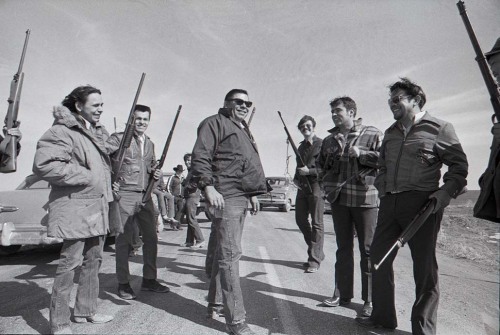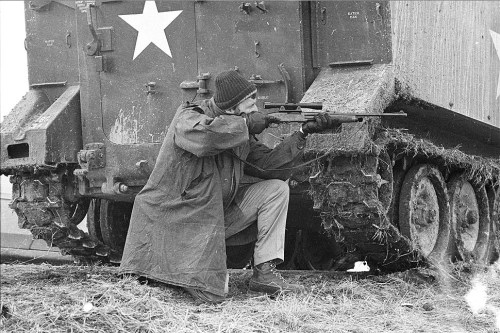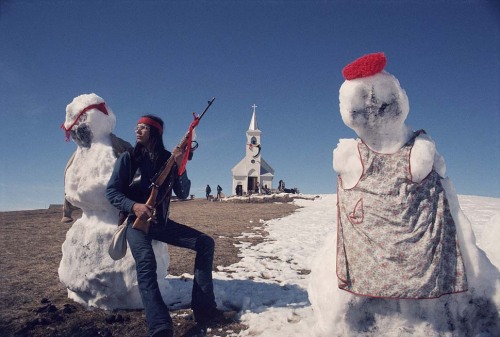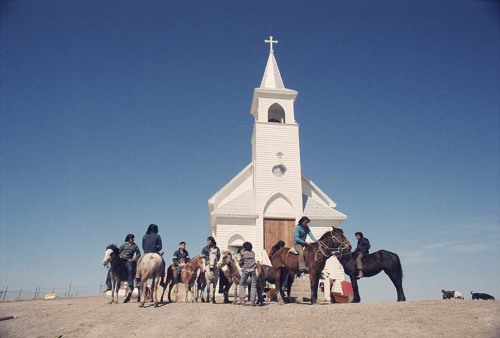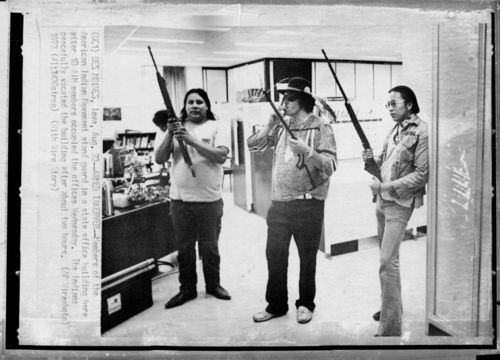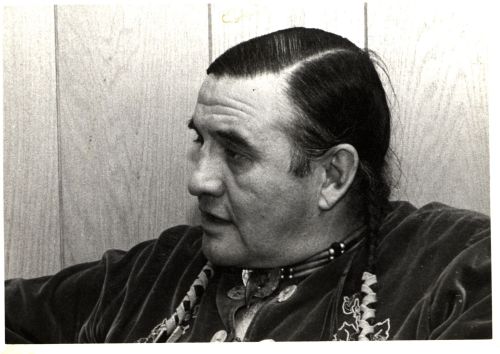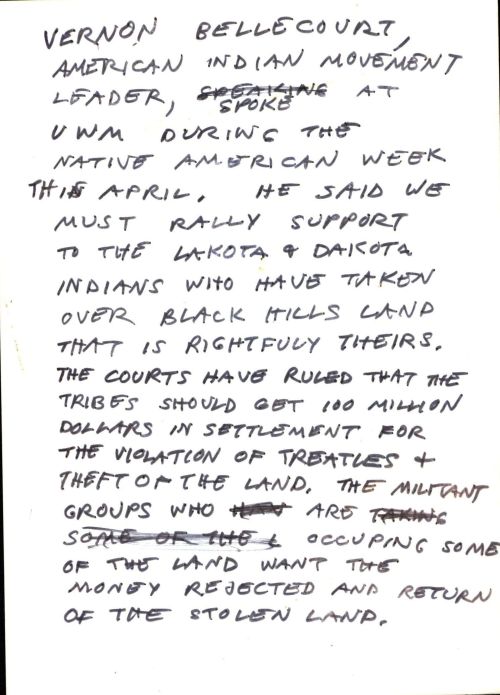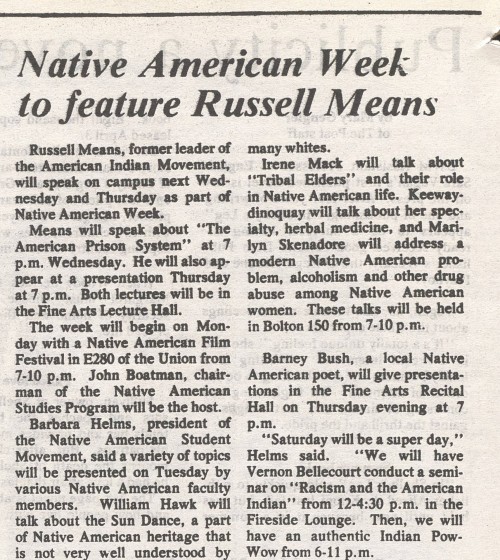#american indian movement

A few days ago, we lost an icon of our time. Clyde Howard Bellecourt (May 8, 1936 – January 11, 2022) was a Native American civil rights organizer. An Anishinaabe (Ojibwe) activist from the White Earth Reservation, he co-founded the American Indian Movement (AIM) in Minneapolis in 1968 with Dennis Banks, Eddie Benton-Banai and George Mitchell. For years, Bellecourt worked to address issues of poverty and police brutality against Native people. He remained active throughout his long life, eventually becoming a strong advocate for eliminating offensive sports mascots. His Anishinaabe name, Nee-gon-we-way-we-dun, means “Thunder Before the Storm.”
Under Bellecourt’s leadership, AIM raised awareness of tribal issues related to the federal government, monitored police harassment in Minneapolis, created welfare programs for urban Indians, and founded Indian “survival schools” in the Twin Cities to teach children life skills and to help them learn their traditional cultures. He initiated the Trail of Broken Treaties, a long march to Washington, D.C., in 1972 to serve as a first step to renegotiating federal-tribal nations’ treaties and relations. In addition, he founded non-profit groups to undertake economic development to benefit Native Americans.
He became a negotiator at the occupation of Wounded Knee on the Pine Ridge Indian Reservation, the site of an infamous 1890 massacre of more than 300 Lakota by the U.S. Cavalry. The Wounded Knee Occupation began on February 27, 1973 when about 200 Oglala Lakota and followers of AIM seized and occupied the town of Wounded Knee, South Dakota. The occupation lasted for a total of 71 days, during which time two Lakota men were shot to death by federal agents and several more were wounded. It was a key moment in the struggle for Native American rights.
In 1993, Bellecourt and others led protests against police brutality in Minneapolis when two intoxicated Native men were driven to the hospital in the trunk of a squad car. Bellecourt continued to direct national and international AIM activities. He coordinated the National Coalition on Racism in Sports and the Media, which has long protested sports teams use of Native American mascots and names, urging them to end such practices; the Washington Redskins finally dropped their mascot in 2020 in response to years of protests. He also led Heart of the Earth, Inc., an interpretive center located behind the site of AIM’s former “survival school,” which operated from 1972 to 2008 in Minneapolis.
Bellecourt died of cancer on January 11, 2022, at the age of 85. At the time of his death, Bellecourt was the last surviving co-founder of the American Indian Movement. Minnesota Governor Tim Walz stated, “Clyde Bellecourt sparked a movement in Minneapolis that spread worldwide. His fight for justice and fairness leaves behind a powerful legacy that will continue to inspire people across our state and nation for generations to come.” According to Minnesota Lt. Governor Peggy Flanagan, Bellecourt was a “civil rights leader who fought for more than a half-century on behalf of Indigenous people in Minnesota and around the world. Indian Country benefited from Clyde Bellecourt’s activism.”
(DC1) DES MOINES, Iowa, Aug. 23—ARMED TAKEOVER—Members of the American Indian Movement stand guard in a state office building here after 10 AIM members occupied the offices Wednesday. The Indians peacefully vacated the building after two hours.
The American Indian Movement were a groundbreaking organization for indigenous rights, taking their inspiration from their contemporaries, the Black Panther Party. They boldly challenged the American power structure and demanded self-determination for their people and an end to the genocide they continue to face. Their history is a rich source of knowledge for us to take inspiration from, as well as learn from their mistakes.
Post link
The term derives from the extremely horrific and racist act of selling Native scalps, ‘skins’, to the United States government. Here is an actual advertisement from The Daily Republican newspaper in Sept. 24, 1863:

Look, non-Indigenous can run around claiming it is non-offensive and it is somewhat common to find Natives who aren’t particularly perturbed by this, mostly because in the hierarchy of needs, the NFL falls way under land rights, clean drinking water, food deserts, etc. I have family members who used to proudly wear ‘Red***n’ apparel, because they were excited it ‘had a Native’ on it. Any representation is better than none, to some people.
With that said, finding one Native who approves of something, who you can then trot out as a spokesperson, is a racist act in its own right. You are essentially telling us that our identity is singular and represented by your designated colonizer.
I don’t care if the term was supposedly created by a Native Person or deemed okay by an Indigenous person. That is like saying that Stella Kübler was the expert spokesperson for all things Jewish or that Ben Carson speaks for the entire Black American community. The term is extremely offensive. There should not even be an argument about this. Instead it should be an education. Indigenous people are not mascots or pets that people can selectively choose to highlight when it is beneficial or supports whatever myth they are trying to sell.
Found in the Archive
These photographs were found in a recent accession to the Roberto Hernandez Center Records (UWM Archival Collection 116, Accession 2019-018, Box 1).
Per the captions on the back of the first two photographs, they depict Vernon Bellecourt and Russell Means, leaders of the American Indian Movement, during their visit to UW-Milwaukee. The photographs are undated, but a search through the UWM Post reflects that both Means and Bellecourt were featured speakers during UWM’s 1981 Native American Week. Bellecourt conducted a seminar on “Racism and the American Indian,” and Means spoke about “The American Prison System.”
Information about the individual and the event in the last photograph of this series is unknown.
Post link





